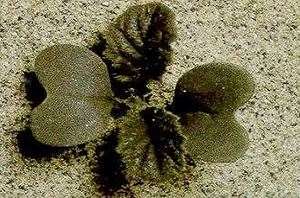Field Guide  Weed Management
Weed Management  Wild Mustard
Wild Mustard
Wild Mustard (Sinapis arvensis L.)
Crop Impacts: Canola
 | |
About Wild Mustard:Wild Mustard is an annual weed, which means that it reproduces by seed only. This particular weed has kidney shaped leaves. They also have leaves that have teeth, and have a hairy texture. The plant is an earthy green colour and does not usual grow to be taller than 100cm. The stem has a hairy, sticky texture to it and is green, with a purple tinge to it. The weed produces bright yellow flowers, and have 4 peddles per blossom. Family: Mustard - Cruciferae 
Wild Mustard Scouting and Prevention:Pre-season tilling can help ensure that this weed does not flourish in your fields. Scouting areas of fields and crops on a regular basis can help prevent Wild Mustard weeds from settling into fertile areas. Wild Mustard grows best in moist cool conditions; good drainage can help avoid this weed from moving in. Wild Mustard Control:Wild Mustard weeds germinate during the same time frame as planting needs to occur. Sulfonylurea herbicides have been known to be effective when trying to chemically control Wild Mustard weeds. Latin / Alternative Wild Mustard Names:- - Sinapis arvensis L
- - Charlock
- - Common mustard
- - Field Mustard
- - Herrick
- - Kale
- - Mustard
- - Yellow Mustard
Additional Wild Mustard Resources: |
http://www.weedwreckingcrew.com/ Dupont Weed Wrecking Crew
http://www.precisionpac.com/ Dupont Precision Pac
http://www.omafra.gov.on.ca/english/crops/facts/03-043.htm Ontario Government: AG
http://www.omafra.gov.on.ca/english/crops/facts/ontweeds/wild_mustard.htm Ontario Government: Ag
http://www.gov.mb.ca/agriculture/crops/weeds/fab18s00.html Manitoba Government: Ag